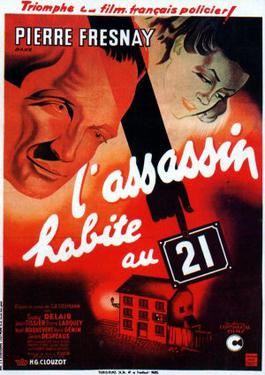A blog formerly known as Bookishness / By Charles Matthews
"Dazzled by so many and such marvelous inventions, the people of Macondo ... became indignant over the living images that the prosperous merchant Bruno Crespi projected in the theater with the lion-head ticket windows, for a character who had died and was buried in one film and for whose misfortune tears had been shed would reappear alive and transformed into an Arab in the next one. The audience, who had paid two cents apiece to share the difficulties of the actors, would not tolerate that outlandish fraud and they broke up the seats. The mayor, at the urging of Bruno Crespi, explained in a proclamation that the cinema was a machine of illusions that did not merit the emotional outbursts of the audience. With that discouraging explanation many ... decided not to return to the movies, considering that they already had too many troubles of their own to weep over the acted-out misfortunes of imaginary beings."--Gabriel García Márquez, One Hundred Years of Solitude
Monday, June 20, 2016
The Murderer Lives at Number 21 (Henri-Georges Clouzot, 1942)
Henri-Georges Clouzot is best-known today for the chilling Diabolique (1955) and the nail-biter The Wages of Fear (1953), but his first feature was a comedy-mystery somewhat in the manner of The Thin Man (W.S. Van Dyke, 1934). In The Murderer Lives at Number 21, police inspector Wenceslas Vorobechik (Pierre Fresnay), known as Wens, sets out to solve a series of murders in which the killer leaves a calling card: Monsieur Durand. Eventually, he is aided (and occasionally stymied) by his mistress, Mila Milou (Suzy Delair), who gets involved in the case because she thinks the celebrity of bringing the killer to justice would help her nascent career as a singer and actress. Clouzot made the film for a company backed by the occupying German forces, who wanted films to replace American imports. The movie shows no sign of Nazi propaganda, and there are those who claim that Clouzot inserted subtle anti-German jokes into the film. It was based on a novel by Stanislas-André Steenman, who worked on the screenplay with Clouzot, who brought the characters of Wens and Mila over from an earlier short film. Wens and Mila have a relationship somewhat reminiscent of Nick and Nora Charles, although no Thin Man film ever contained a scene like the one in which Mila squeezes out the blackheads on Wens's face -- a gratuitous bit that is presumably designed to show the intimacy of their relationship. Compared to Clouzot's later work, it's a slight but amusing movie, enlivened by the oddball inhabitants of the boarding house at No. 21 Avenue Junot that Wens moves into, disguising himself as a clergyman, after he receives a tip that the murderer lives there.
Links:
Henri-Georges Clouzot,
Pierre Fresnay,
Stanislas-André Steenman,
Suzy Delair,
The Murderer Lives at Number 21
Subscribe to:
Posts (Atom)
